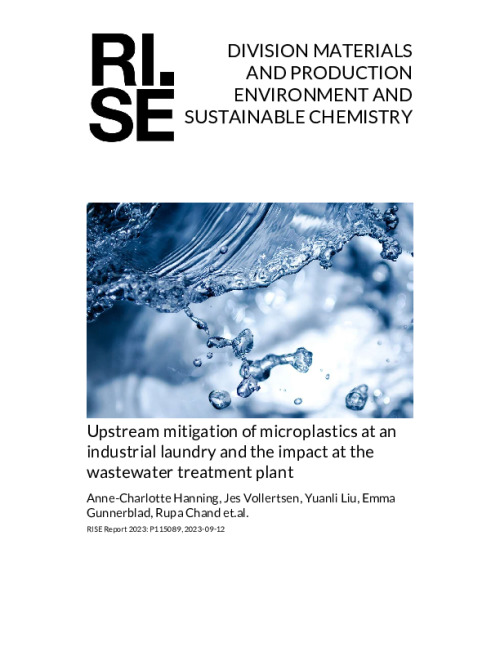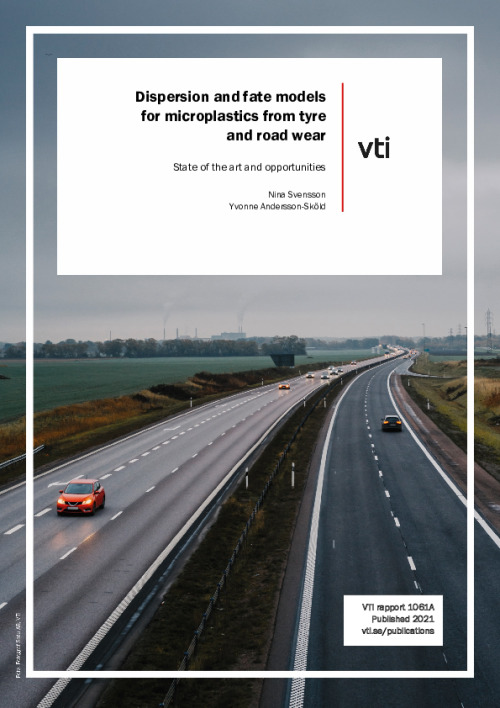Indicators for microplastic flows
As a part of ongoing work to limit the emissions of microplastics into the environment, the Swedish EPA has tasked Swedish Environmental Emissions Data to develop indicators for how these emissions could be measured. The aim of this is to gain a greater understanding of how large current emissions of microplastics are and to subsequently provide a knowledge base for the work to decrease said emissions.
To reduce the leakage of plastic into nature the Swedish Environmental Protection Agency (Swedish EPA) has established two indicators for follow-up: “Littering of objects containing plastic” and “Estimated total leakage of microplastics in Sweden”. The aim of this project was to propose detailed indicators for prioritised sources and pathways that may be used to annually follow-up the spread of microplastics in Sweden.
This has been done through expert workshops, interviews, literature studies, and in close dialog with Swedish EPA. The following aspects were considered for the proposed indicators: data availability, representativeness, possible sampling- and analytical methods, as well as calculation approaches, method uncertainties and its cost-efficiency.
Based on these results, the following indicators are suggested to be used to follow-up leakage of microplastics from the sources and pathways prioritised by Swedish EPA:
Tyre wear - Microplastics from tyre wear (kg/y) based on national annual traffic activity data (vehicle km) for different vehicle classes. The annual traffic activity data is multiplied with vehicle class-specific emission factors (g/km) to calculate the total leakage.
Artificial grass pitches (AGP) - 1) Replenishment of infill on Swedish AGP:s based on an annual survey where facility owners report actual replenished infill (kg/m2 ). To scale up the amount (kg/y) of replenished infill to national level, an estimate of the total area of AGP:s with rubber infill could be estimated based on available statistics. 2) A certification system for AGP:s in Sweden is introduced to provide well-managed pitches. The certification should assure that the facility owners have made certain measures to reduce emissions of microplastics. The indicator to follow-up is the number of certified artificial grass pitches.
Industrial production of plastic pellets - Introduced reporting requirement of microplastics emissions for all Swedish producers of plastic pellets based on sampling and analyses being performed in effluent water. Data on microplastics leakage (kg/y) can be made available through changes of relevant permits or via new legislation. 6
Architectural and antifouling paint - Weight of polymers in architectural paint, antifouling paint and other hull paint put on the Swedish market annually (kg/y) are considered to reflect the amount of microplastics spread to nature from paint.
Littering – Total annual amount (kg/y) of plastic litter based on the annual national plastic litter monitoring program to be introduced 2023 and/or the existing urban litter monitoring program run by The Keep Sweden Tidy Foundation (HSR). Macrolitter is considered to reflect the leakage of microplastics to nature.
Wastewater – 1) Measured average load of microplastics (g/pe, y) in wastewater treatment plants, both incoming and effluent water. This can be conducted through an extension of the existing Swedish EPA's Environmental Toxics Coordination's sub-programme on environmental toxins in the urban environment, analysing occurrences of chemicals in effluent water from sewage treatment plants, to also include microplastics. By analysing the water for total amount of microplastics as well as fractions such as rubber particles and textile fibres, the results can also be used as an indicator for the source "laundry" and the pathway "stormwater". 2) Reported average volume (m3 /pe, y) of sanitary sewer overflow at WWTP and from the sewer systems in Sweden based on existing environmental reporting. 3) Measured average load of microplastics (g/pe, y) in WWTP sludge based on the same monitoring program as indicator 1).
Wind – Measured average yearly deposition (g/m2 , y) of microplastics in bulk deposition analysed based on volume proportional monthly samples in the existing the Swedish Throughfall Monitoring Network.
Since the suggested indicators are mainly based on existing data and monitoring programmes it should be possible to run development projects for suggested indicators in 2023, aiming for full implementation by 2024.
When several indicators are proposed, they are prioritized in number order.
It has not been possible for the project to quantify a cost for suggested indicator system. However, mostly existing and yearly available data is utilised in the proposed indicators. Due to this, it is considered that the suggestions can be implemented without high costs for facility owners and authorities.



